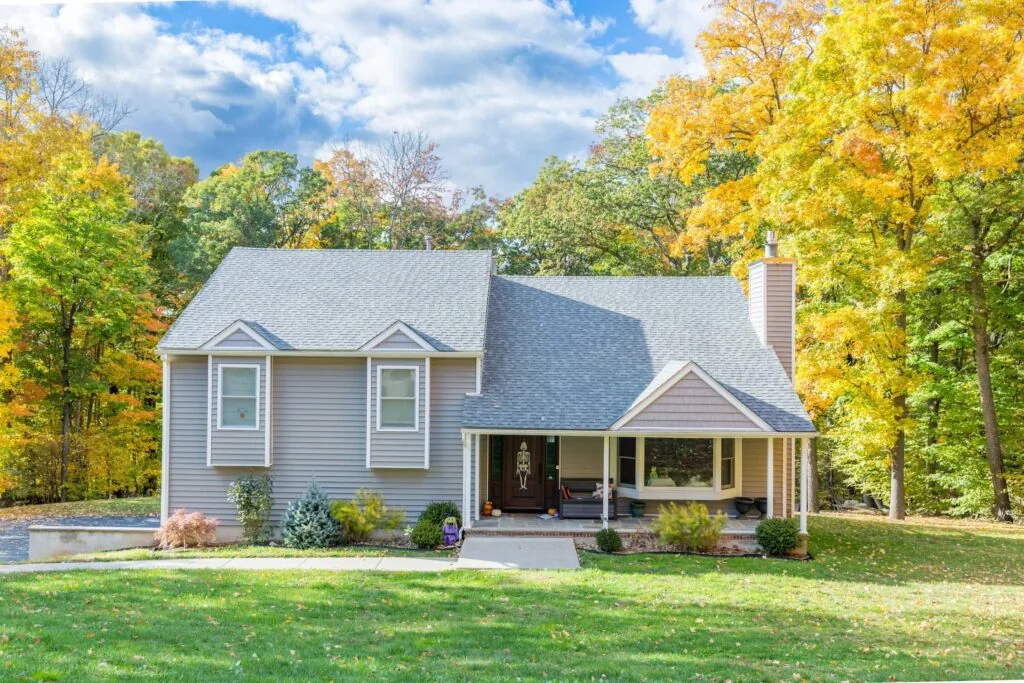Please understand that an in-depth, exterior roof inspection should be performed by a professional with the proper safety equipment and in-depth knowledge of each type of roofing system. With that said, you might be interested in knowing the guidelines for a proper roof inspection so you know what professionals are looking at when they arrive at your home.
Here’s a comprehensive checklist of an interior and exterior roof inspection to walk you through the process.
What To Expect From Your Professional Roof Inspection
Regular roof inspections and maintenance could extend your roof’s lifespan. Even if you don’t have any visible problems, such as roof leaks or structural issues, consider scheduling routine checks to prevent potential problems from becoming serious problems. A typical roof lifespan is 15 years, anything older than that will need to be considered for replacement with extreme weather past, or in the future.
There are many potential hazards to consider when inspecting a roof, which is why it should be left to professionals who have the necessary safety equipment.
Exterior Roof Inspection Checklist
Your exterior inspection should stay at the ground level before potentially moving inside your attic, for a closer inspection of what is under your roof surface.
Here’s what professional inspectors will look for when performing an inspection.
Exterior roof inspection
- Check for any missing, curling, or broken shingles across the entire roof.
- Look for signs of algae, moss, or mold growth, which can indicate moisture retention.
- Leave it to the professionals: Inspect the flashing around chimneys, vents, and skylights for signs of damage or deterioration.
- Visually assess the condition of the fascia, soffits, and eaves for signs of rot, decay, or pest infestation.
- Leave it to the professionals: Check for cracked or deteriorated caulking around attic intake vents, pipes, and other roof penetrations.
- Leave it to the professionals: Check for signs of water infiltration around roof penetrations, such as vents, chimneys, and skylights.

A professional will: evaluate flashing and seals
- Check the condition of the flashing around roof penetrations, including vents, chimneys, skylights, and valleys.
- Ensure the flashing is securely attached and properly sealed to prevent water infiltration.
- Check for rust, corrosion, or deterioration in metal flashing components.
A professional will: inspect the structural integrity
- Assess the roof’s overall structural integrity, including sagging or uneven areas that may indicate structural damage or inadequate support.
- Look for signs of rot or decay in the underlying roof decking, rafters, and trusses.
- Inspect the chimney for signs of leaning, cracking, or loose bricks that may compromise its stability.
You and a professional can: Assess roof drainage
- Confirm that gutters and downspouts are securely attached and free of debris.
- You can confirm whether or not your gutters are properly performing during storms.
- A professional will examine the gutters and downspouts for debris buildup, clogs, or damage that may impede proper drainage.
- Next time there is a downpour or rain storm, check for water pooling or new water damage which could indicate that gutters are not adequately sloped or draining away from the foundation of your home.
Interior Inspection Checklist
A professional can learn a lot about the health of your roofing materials during an attic inspection. Here’s what you and a professional look for when they enter your attic.
- Inspect the attic for signs of water stains, leaks, or moisture buildup on the underside of the roof deck.
- Inspect the attic insulation for signs of saturation or compression, which may indicate water intrusion.
- Look for water stains or signs of a roof leak on interior ceilings, walls, and attic surfaces.
- Look for daylight penetration through the roof boards, which may indicate gaps or holes in the roof structure.
- Check for signs of mold, mildew, or musty odors, which can signal excessive moisture and ventilation issues.
- Pay attention to the temperature of how hot or cold it feels in your attic. Proper insulation coverage and ventilation will prevent heat buildup and moisture retention.
By following this comprehensive roof inspection checklist, you can quickly identify potential issues early and take proactive steps to maintain the integrity and longevity of your roof lifespan.
Regular inspections and maintenance are crucial to preventing costly home repairs and ensuring your roof provides reliable protection for your home. For roof replacement assessment in Northern New Jersey, contact RJW Exteriors. We offer flexible payment options and only use CertainTeed Pro professional roofing materials.
Key Takeaways: What Happens During Regular Roof Inspections
- Professional roof inspections, repairs, and maintenance can keep your roof in good condition and prolong its life.
- Professionals will inspect the existing roofing material and check around flashing and seals during a full roof inspection.
- They will also complete an inspection to determine the integrity of the roof structure – as well as the health of the drainage system.
- A professional will also examine your home’s interior, including the attic, to determine the health of your roof.



